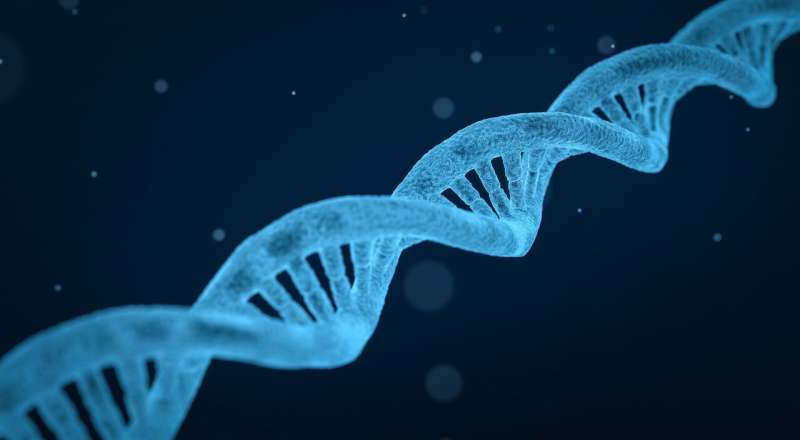Credit: Pixabay
Australian scientists have unraveled part of the mystery about how nature can usefully access genetic information in cells despite it being so tightly packed away.
The discovery helps solve what is effectively an 'input/output' problem caused by the need for cells to pack meters of DNA into a space just millionths of a meter across—but at the same time read, copy and repair the information held in the DNA. It also helps provide pathways to understand how defects in this process contribute to disease such as schizophrenia and cancer.
Led by Professor Joel Mackay in the School of Life and Environmental Sciences at the University of Sydney, the biochemists have revealed that a particular motor protein, CHD4, is used to access genetic information tightly spooled onto what can be imagined as 'genetic cotton reels."
The research is published today in Nature Communications.
Professor Mackay said: "This protein effectively remodels our DNA to allow access to the information that determines the fate of a cell and its ability to respond to signals from the outside. It is a critical protein for almost all the work that cells do, including cell division and DNA repair."
Understanding this process will be critical in the long term for developing treatments for neurodevelopmental disorders and some cancers.
"These illnesses are in part triggered by defects in the remodeling of the DNA that is driven by this process," Professor Mackay said.
"The protein CHD4 and its close partners are emerging as important risk factors in polygenic neurodevelopmental disorders, schizophrenia and bipolar disorder, as well as in rare monogenic disorders, such as GAND, which causes severe mental disability," Professor Mackay said.
He said that mutations in the CHD4 protein that impair its function are also associated with endometrial carcinoma.
More information: Yichen Zhong et al. CHD4 slides nucleosomes by decoupling entry- and exit-side DNA translocation, Nature Communications (2020). DOI: 10.1038/s41467-020-15183-2
Journal information: Nature Communications
Provided by University of Sydney























